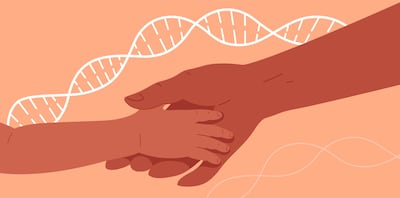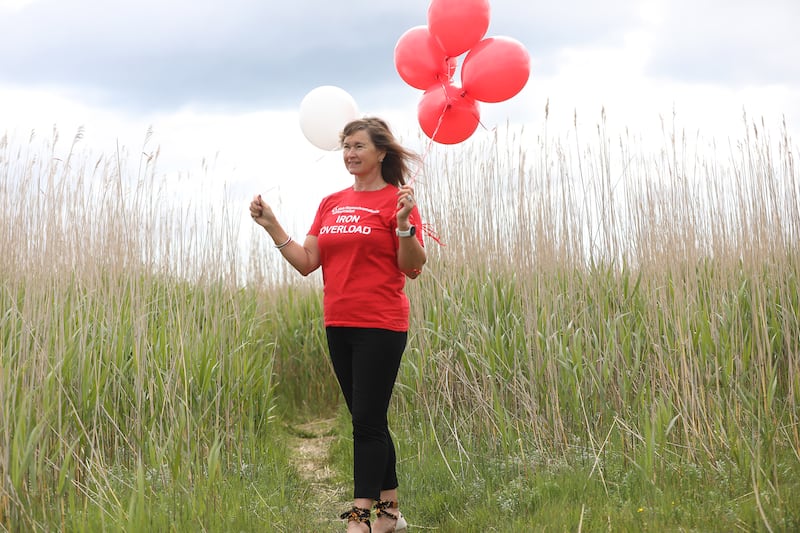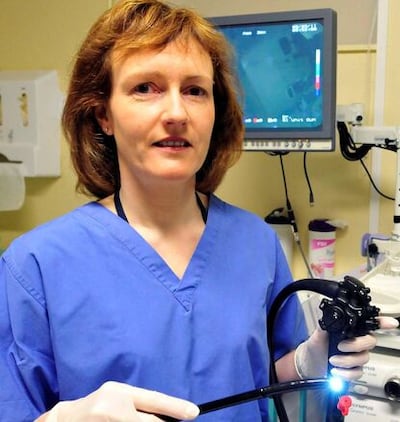
“Even though one is born with haemochromatosis, one can continue with all life activities, even the extreme ones,” says Anna McCarthy Power, who swam the English Channel in July.
A regular swimmer in the Leinster Open Water Swimming competitions and member of the Wales-Ireland relay team in 2019, Power’s iron levels from a blood test were correctly interpreted by her doctor as haemochromatosis, the iron overload condition. She spent a year getting a weekly venesection treatment which removed the dangerous levels of excess iron.

“When my iron levels returned to normal, I started to donate blood three to four times a year,” she says, “which meant that my iron levels were reduced down to within a normal range. This is also known as being in the maintenance phase. Therefore, due to early detection the condition has had minimal impact on my life. In fact, everyone benefits from my condition when I donate blood, which is a win-win for everyone!”
Also known as the “Celtic gene” due to it being Ireland’s most common genetic condition, haemochromatosis is an inherited condition where excess iron can build up in the body, leading to serious health conditions. If left untreated, severe risks include liver disease, diabetes and heart issues. The Irish Haemochromatosis Association (IHA) estimates there are at least 20,000 undiagnosed cases of haemochromatosis in Ireland.
READ MORE
“We all ‘inherit’ or get genes from our parents, therefore if either of them has the genes associated with haemochromatosis, we may inherit them,” says Dr Orla Crosbie, hepatologist from Cork University Hospital. “In other words, it is not something we can acquire as we grow up, we either have the genes or not at birth.”

There is a one in four chance a child may get the condition, which is often referred to as “iron overload”, if one parent has the gene. The risk increases to one in two if both parents are carriers. However, Dr Crosbie says it is important to remember not everyone with the genes will get iron overload.
“We cannot influence the genes we inherit but if there is a family history, adults should be tested for haemochromatosis and avoid precipitating lifestyle factors,” says Dr Crosbie. “Treatment by venesection can then prevent the development of complications. If we are at risk, we should get tested by our GP for iron and ferritin levels and haemochromatosis genes. We should also avoid excess alcohol, iron and vitamin C supplements unless prescribed for us, and keep our weight in check and lead an active lifestyle and healthy diet.”
One in five Irish people carry one copy of the gene and one in every 83 carry two copies of the gene, predisposing them to develop iron overload. Symptoms range from chronic tiredness and joint pain, to abdominal pain and sexual dysfunction.
“With Ireland having more cases than anywhere else in the world, we want everyone to understand what haemochromatosis is and how important early diagnosis is,” says former senator Dr Maurice Manning, chair of the IHA and a haemochromatosis sufferer.
“Now that we are coming out the other side of the pandemic, it is becoming much easier to stop ignoring symptoms and get medical advice if you have any worries or concerns. It’s as easy as talking to your GP and arranging a blood test. Although it can be life-threatening, once diagnosed before organ damage has occurred, haemochromatosis can be successfully treated and patients go on to live their lives to the full, without any impact.”
Brian Keegan, a volunteer with the IHA, lives with the condition. He was not aware of any history of the condition within his family. When he visited his doctor complaining of chronic fatigue, a test confirmed his doctor’s suspicions who advised him to share his diagnosis with his family. It was at this point that the gene was linked back to his mother, who is a carrier. And it was likely that his father, who died in the 1980s at the early age of 61, was also a carrier.

“This spurred me on to make sure everyone is aware of this condition,” says Keegan, “and that you can do something about it and if you don’t it may bring you to an early demise”. Keegan altered his diet after the diagnosis, knowing that he now needs to be aware of how much iron he is ingesting. “It’s being aware that you don’t have to make drastic changes but being conscious of high iron content foods, such as steaks and pork, certain breakfast cereals and of course Guinness which will increase your iron count.”
Brian went from battling chronic fatigue to managing his iron levels and feeling a renewed sense of energy. “You get all this energy back that you thought you’d lost gradually over time as the iron count got higher and higher. I really believe taking a proactive approach to your health makes an awful lot of sense.”
Common symptoms of haemochromatosis, according to the IHA, include unexplained weakness or fatigue, abdominal pain, diminished sex drive or impotence, arthritis particularly if it occurs in the first and second knuckles or the ankles, diabetes, liver disorders, discolouration of or bronzing of skin, mood swings and irritability and abnormal heart rhythm. When left undetected and untreated, iron overload can lead to severe organ damage and premature death.
The treatment for haemochromatosis is centred on venesection, which is the removal of blood. It is very much like donating blood, however, during venesection the excess iron is removed from the blood. To prevent organ damage, it is recommended to begin treatment as early as possible. However, if damage has already occurred, venesection treatment can stop any further damage being caused. Treatment is often ongoing for life and may require blood to be removed once or twice a year depending on how quickly the iron is reaccumulating.
“It would also be wise to discuss testing specifically for haemochromatosis with your GP if you have a parent or sibling who developed liver disease or diabetes with no known cause,” says Dr Crosbie. “There is a much better awareness now of haemochromatosis and genetic tests are more readily available than two to three decades ago. So, if you are in doubt ask your GP and they can advise.”
Furthermore, Dr Crosbie reminds us that while the condition is understood and well known in Ireland, it may not be as commonplace in other countries. “As a lot of us travel and relocate now,” she says, “it is important to remember that the incidence of haemochromatosis is higher in Ireland than anywhere else in the world. So, if you live in Japan, for example, you may need to specifically ask your doctor about it there, as awareness will not be as great as in Ireland.”












